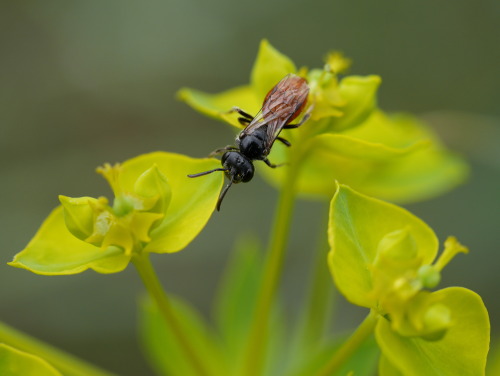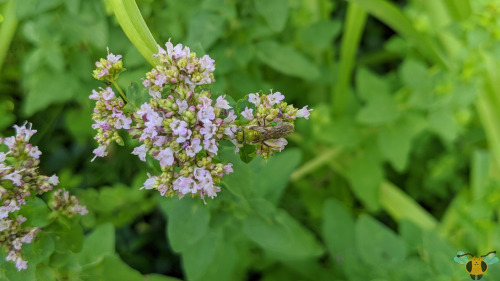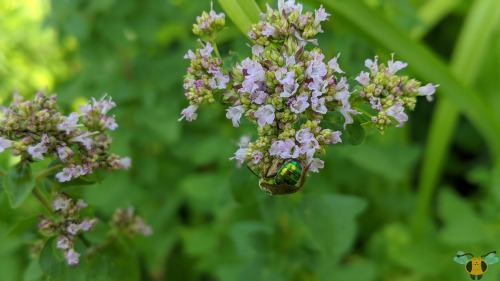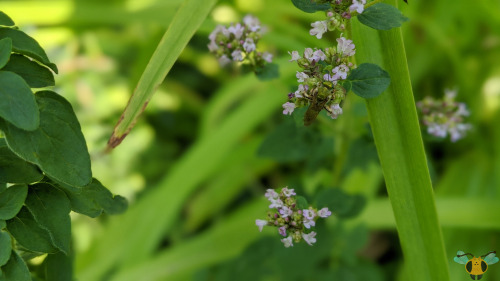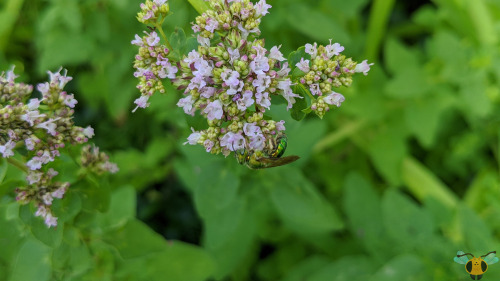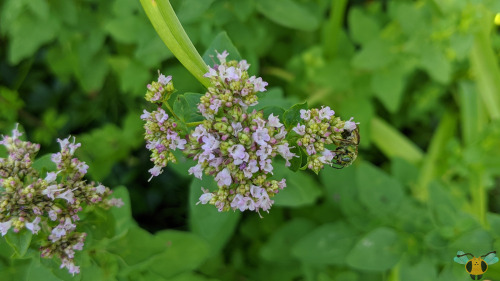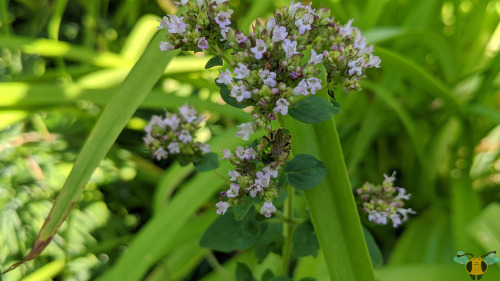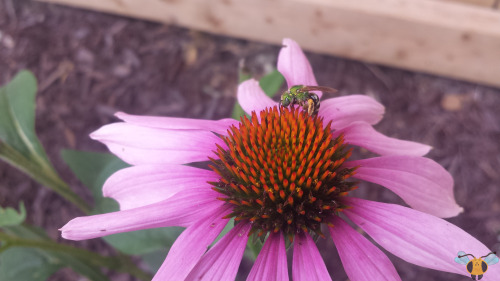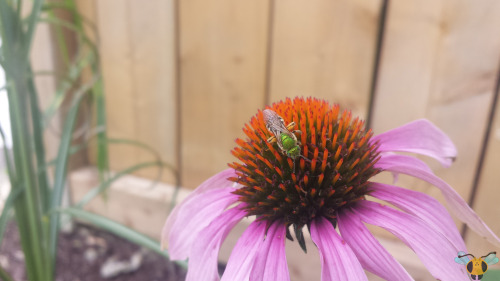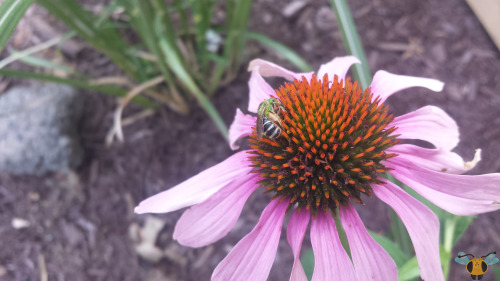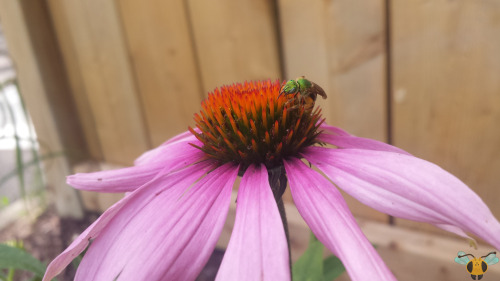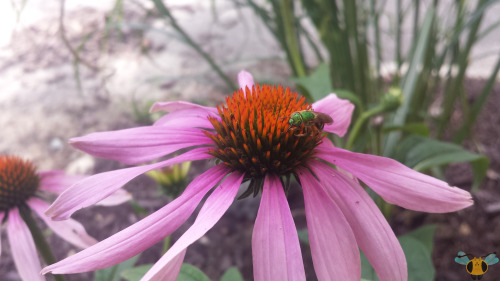#sweat bee
Sphecodes(arvensiformis) “Cuckoo Sweat Bee” Halictidae
onEuphorbia esula “Leafy Spurge” Euphorbiaceae
Blue Mountain National Recreation Area, MT
May 16, 2016
Robert Niese
Sphecodesbees are cleptoparasitic, cuckoo-like bees that lay their eggs in the nests of other sweat bees. Despite their outward appearance, these insects are not wasps, but they have converged on a very cuckoo-wasp-like life-history strategy. A female enters the nests of another Halictid, consumes a developing egg and replaces it with her own. Unfortunately, these bees, like the vast majority of Halictids, are very poorly studied and there are few entomologists capable of accurately identifying them beyond the genus level. Oh, and by the way, Leafy Spurge, while it is one of Missoula’s most widespread invasives, is also one of my favorite spring plants. They’re just such odd organisms! More photos and natural history info to come, I’m sure.
Looking back at my other photos of these bees from years ago makes me realize how far my skills as a photographer and natural historian have progressed.
Post link
Lasioglossum(Hemihalictus) sp. “Weak-veined Sweat Bee” Halictidae
onSolidago missouriensis. “Prairie Goldenrod” Asteraceae
Apgar Lookout Trail, Glacier National Park, MT
October 9, 2015
Robert Niese
Lasioglossum is the world’s largest genus of bees and contains more than 1700 species worldwide. Like many other speciose invertebrate genera, we know relatively little about these organisms and only a handful of entomologists worldwide are capable of identifying them to species. In the last five years, researchers throughout North America have revised the taxonomy of this group using phylogenetic data, new morphological characters, and over 10,000 museum specimens. According to their keys, this particular individual is possibly a male L. (Hemihalictus)inconditum.
Post link
Silky-Striped Sweat Bee - Agapostemon sericeus
As promised on Tuesday when the Bicolored Sweat Bee was showcased, today’s post features a close relative within the same genus! With iridescent green colors across the body, it is unmistakably another foraging Sweat Bee looking for pollen and nectar among the oregano flowers. Compared to Tuesday’s insect, this one is uniformly green across the body with all dark-colored legs (and hindmost of which are covered with lustrous gold hairs). While faintly seen in between the abdomen’s segments, little white bands are present too, which is an important observation to look for when determining which Sweat Bees call your garden home. Both males and females can sport this emerald shell, while the female bicolored Bees look very close in terms of resemblance, though their legs make sure that they’re easy to tell apart. According to Bugguide (click here to see the gist for yourself) 4 species of Agapostemon Bees call Ontario home, each with their own differences to observe. I’m ultimately going with the Silky Bee, but that identification has a little competition with the Brown-Winged Sweat Bee (A. splendens) and here’s why.
A.splendens was considered due to the similarities it shares with A. sericeus. Looking at the base of the wings however, there is no trace of brown or orange color to be seen nor the red markings on the jaws. Furthermore, the wings (though dark) seem to be translucent, making the silky Bee the best fit here. I could be wrong; lighting in a picture could mean the difference between two very similar Bees. And its not as if the Bee will flash its bands at me. Better to fly away and escape than attack a large photographer. These really are skittish Bees, but if you can photograph and observe them, they are worth the effort. And if one is attracted to your sweat, that’s hard work paying off. While now it’s clear what to look for in Ontario’s Sweat Bees (which will be helpful for the future) things become much more delicate when only looking at pictures without the live insect to help you, I may say this in so many words across many posts, but there’s a system and an art to successfully identifying the insects around you. And it is beautiful once mastered! Best of luck during your summer if you plan to go searching for these lucky and industrious ground Bees!
Pictures were taken on July 21, 2020 with a Google Pixel 4.
Post link
Bicolored Striped-Sweat Bee - Agapostemon virescens
MostBees are associated with colors like yellow and black, but they come in an even wider array of colors than one could possibly imagine. There are even tropical Bees that are bright blue, purple, white and even some with traces of red (which may or may not be a Red Belt! Today and Friday, this blog will showcase two particular green colored Bees which at first glance may resemble the fabled Jewel Wasp, but are in fact, well, Bees! Look at that little face. That is the face of a Bee from the family Halictidae, better known as Sweat Bees due to their attraction to sweat from the human body. Sweat is a valuable source of salt for them, so an opportunity like this is too great ignore. Fear not, the female’s sting isn’t very powerful, so even if you consider them a nuisance, they present no real threat to you if you’re walking in the park. In fact, letting one land on you may present a valuable opportunity to observe them in action.
It’s best to note that you shouldn’t count on them landing on you if you actively seek them out as these insects are very skittish and eager to escape. Better to sit down after some physical activity and let them come to you. Aside from their diet of sweat, these Bees do as most others do and supplement their diet using nectar and pollen from a wide variety of flowers. This individual has a lot of surface area to cover on this echinacea flower, but plenty to feast on as a result. Female Bicolored Bees need to gather what they can to provision their nests and the larvae within. Like Digger Wasps, they too nest in the ground and have cells that contain larvae, but unlike those predator insects, these diligent Bees line the cells with gathered pollen instead of paralyzed insects or spiders. Quite the little ecological niche they have. As well, while the aforementioned Digger Wasps are solitary hunters, Sweat Bees such as this one may join forces and cooperate socially within a single burrow. It’s not quite an insect colony in terms of structure (i.e. no castes or honey to be made), but a few individuals working together may be all in the difference in the world, especially when hunting for food is not an option.
Pictures were taken on June 26, 2018 with a Samsung Galaxy S4. On Friday, other specie of Agapostemon Bee that calls Ontario home!
Post link

Bug of the Day
A tiny sweat bee on clover, from the archives (June 2005). Yes, that’s right, I have been photographing bugs longer than some of you have been alive…

